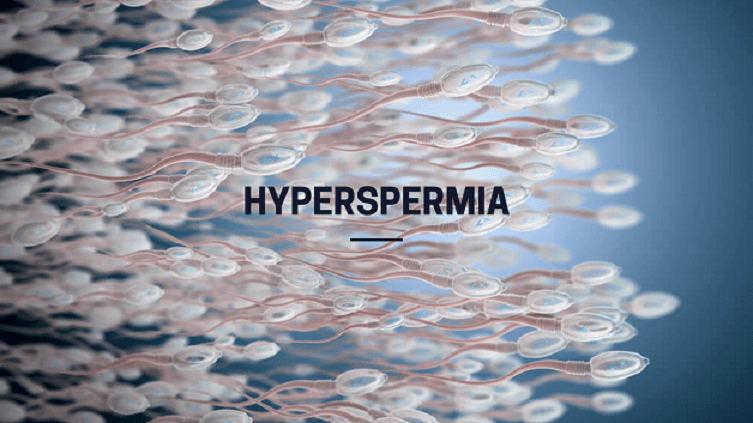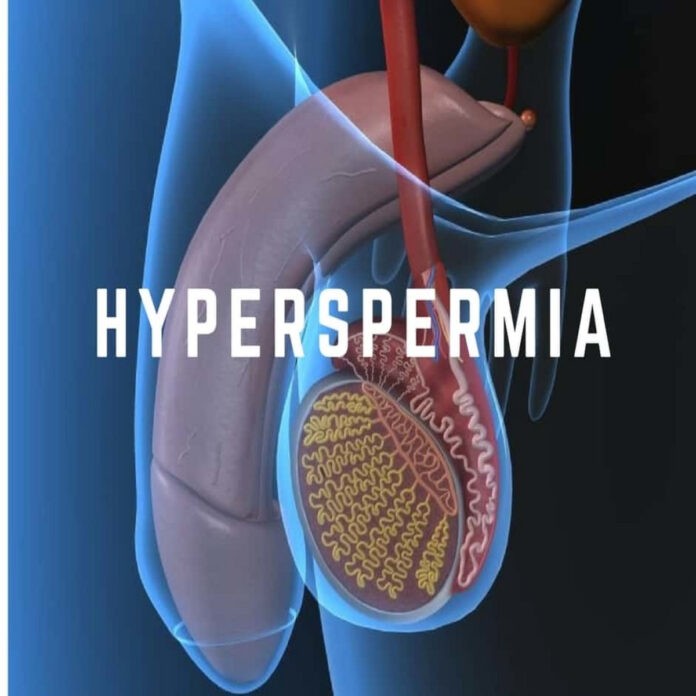Pages of Contents
What exactly is Hyperspermia?
Hyperspermia is a disorder where the quantity of the sperm released by an individual exceeds the normal quantity. This is a rare occurrence and has been found to affect about 4 percent of male population of India. Semen volume excreted is between 2 and 6 milliliters. If the amount of semen in one man is greater than 6.3 milliliters, the man is believed that he is affected by hyperspermia.
Symptoms:
Sexual drive high The sexual cravings of hyperspermia sufferers may be greater than the normal.
Pain following ejaculation Hyperspermia sufferers struggle to ejaculate because the amount of semen is dense or concentrated. This could cause extreme discomfort when trying to ejaculate.
Ejaculation delay: Patients are delayed in reaching orgasm because of the thick semen’s consistency.
The color of sperm is: The sperm discharged in hyperspermia sufferers will be off-white or yellow
Fatigue and dizziness: Patients take a longer amount of time than normal to ejaculate , making them exhausted, weak and dizzy.
breathlessness Hyperspermic patients may experience breathing difficulties for a while after the ejaculation.
the stretchiness the penis: Another sign that sufferers of it is stretching or tightness of the penis when they are exercising or after exhaling.
Thin semen After each ejaculation, one could experience the presence thin semen.
Impotence or erectile dysfunction: Over the course of time, those suffering from hyperspermia might find it difficult to have an erection. This can result in a weak quality erection as well as male infertility.
The Reasons
The reason for long-term hyperspermia remains known to the public. It is common for people to experience a temporary increase in hyperspermia for instance, following a period of abstinence. However, the volume will be restored to levels that is normal in time.
Some people believe there’s possibly a connection between hyperspermia as well as lifestyle and dietary practices, like taking supplements or herbs to increase the activity of the sexual organs. This theory is mostly unstudied.
There are other theories that suggest that a mild prostate infection causes inflammation of the prostate which can lead to an increase in the amount of fluid produced or volume. However, the precise cause of the problem is not known.

 Hyperspermia credit newsdigin.com
Hyperspermia credit newsdigin.comWhat does it mean for fertility :
The impact of hyperspermia upon fertility is mostly dependent on the amount of sperm within the ejaculate. In the majority of cases hyperspermia doesn’t
significantly impact fertility. If the quantity of sperm in the body is proportional to the amount of seminal fluid, then hyperspermia could actually boost the fertility of male. If the semen is less dense but the sperm is less concentrated which means the odds of fertilisation are less. Additionally, if hyperspermia occurs following the
lengthier period of periods of abstinence from sexual activity, the semen could contain a greater proportion of damaged and dead the sperm, which is unable to fertilize the eggs. Certain men who experience hyperspermia may consequently suffer from infertility.
Methods
Three hundred thirty three ejaculates that had hyperspermia (semen volume greater than 6 milliliters) was divided into 3 groups of group A, with a n=66 semen volume 6.0-6.9 mg Group B (n=63) semen volume >7.0 ml group C, group C, n=4, semen volume >6.0 milliliters, no semen in the ejaculates. Sperm motilityand count and morphology were assessed in accordance with the World Health Organization Laboratory Manual (2010).
Results
From the 133 ejaculates that were studied the largest was 10.8 milliliters. The majority of samples with hyperspermia showed normal sperm parameters of conventional type. No significant differences were observed in the sperm motility or abnormal morphology rates between the two groups (P>0.05). Furthermore there were no differences observed in the incidence of low sperm motility, low sperm count, abnormal morphology, or white blood cells (WBC) positive between the two groups (P>0.05). However, the number of sperm in group B was significantly lower than in the A group (P<0.05). Ejaculates from group C were not positive for WBC positive status.
Research:
A study that was conducted in Australia looked at the sperm of 4223 men and identified 229 men (5.42 percent) with hyperspermic. 16 of them, 49.3 percent were found to have a sperm level lower than WHO minimum requirement at 20mega/ml. Similar to this, a study conducted by researchers in South Africa, where 70 percent of patients were thought to be attributable to male factors for infertility, found hypospermia in 45percent and hyperspermia in nine percent of the patients examined. …
… Two European studies, 1819 and 19 there was no hyperspermia case found in comparison to Australian sixteen and South African 17 studies, as shown in the current study. This is due to the geographic location of the five countries, including Australia, South Africa and Pakistan located in the tropical zone and both European countries falling within an area that is comparatively colder. .
… Because that the Australian study was conducted to determine the semen upper volume which is more probable to exhibit hyperspermia. 16 The study, which focused on the effects of volume, it was revealed that there was an that there was a low volume of ejaculatory in 23.34 percent as well as high volumes in 7.88 percent of males. The seminal averages were within the normal range for both the low (56.50 + 10.50) and higher volume groupings (62.20 + 14.50) but were substantially less than those of the groups that were in control (102.12 + 1.34 Table IV). …
What are the treatment options?
Addressing Hyperspermia Concerns
There isn’t a “cure” to treat hyperspermia. The occasional hyperspermia flare-ups that result due to lifestyle changes can be prevented by limiting changes that trigger hyperspermia. This means the avoidance of steroids, performance-enhancing medications, as well as diets that are high in fiber and protein. For those who have been suffering from hyperspermia for a long time or a urological problem, a visit to a doctor should be scheduled.
Infertility sufferers who are affected by hyperspermia or hyperspermiacs, intrauterine in as well as split ejaculate therapies could assist in the resolution of these concerns.
Source link 1 :// Source link




Comments are closed.